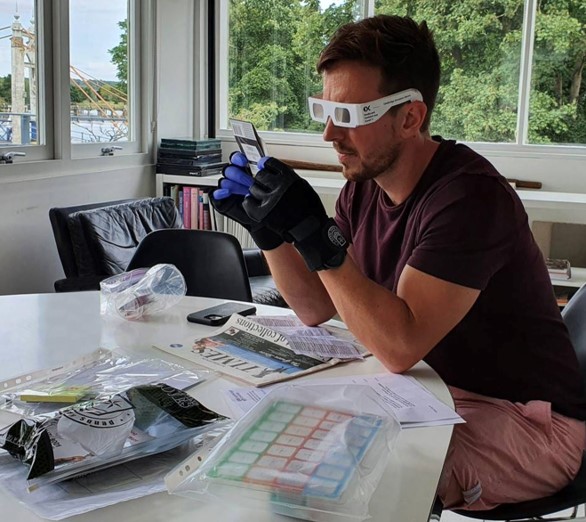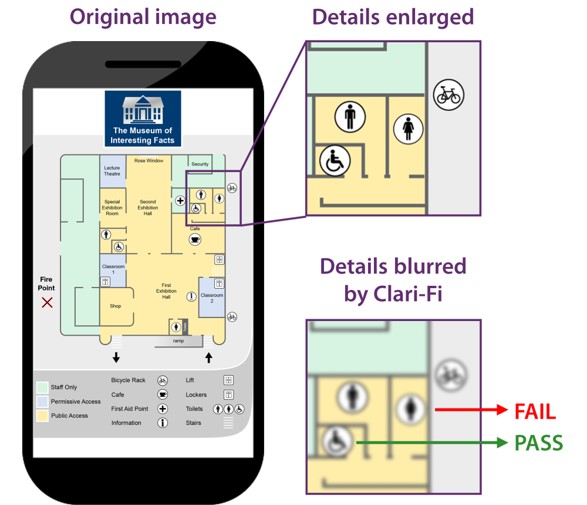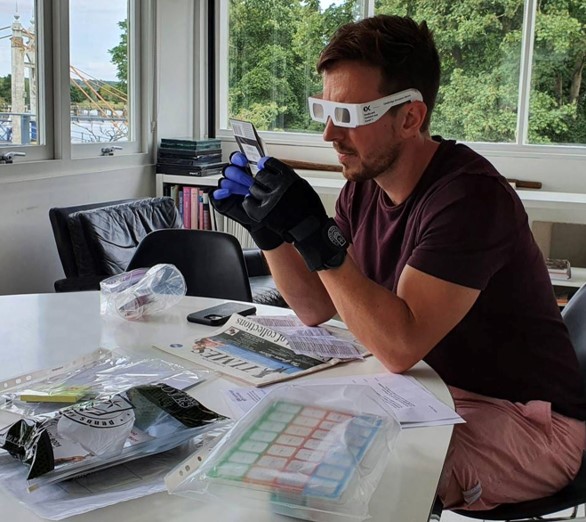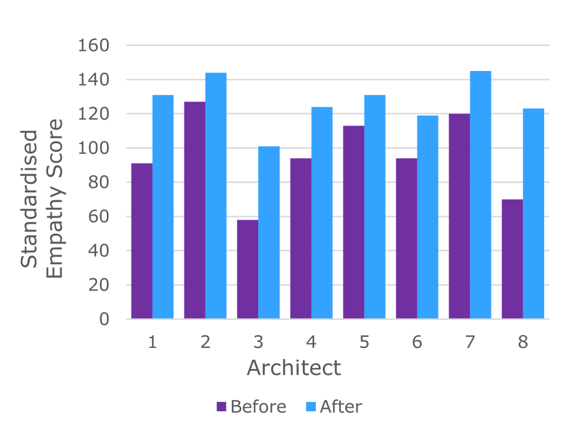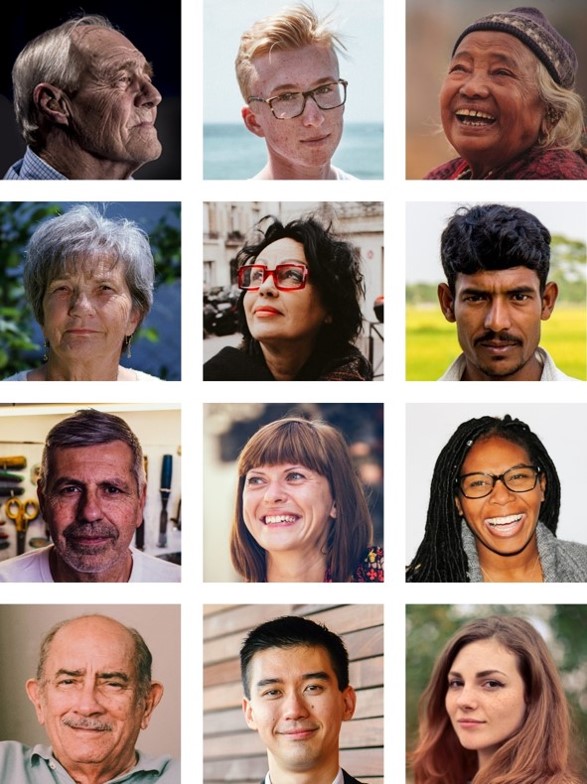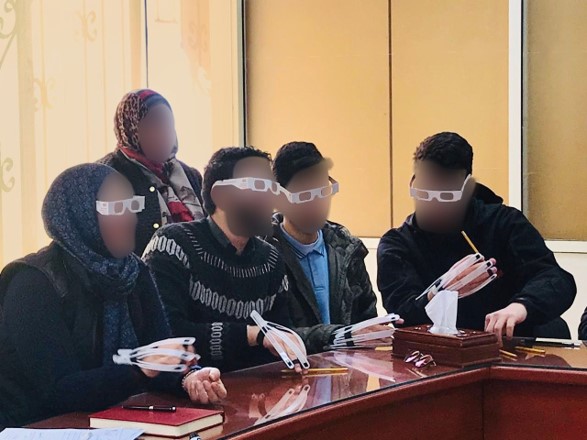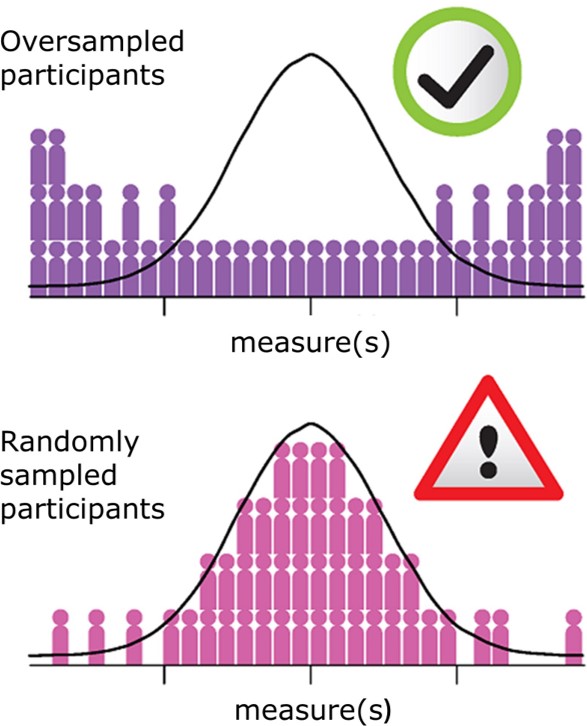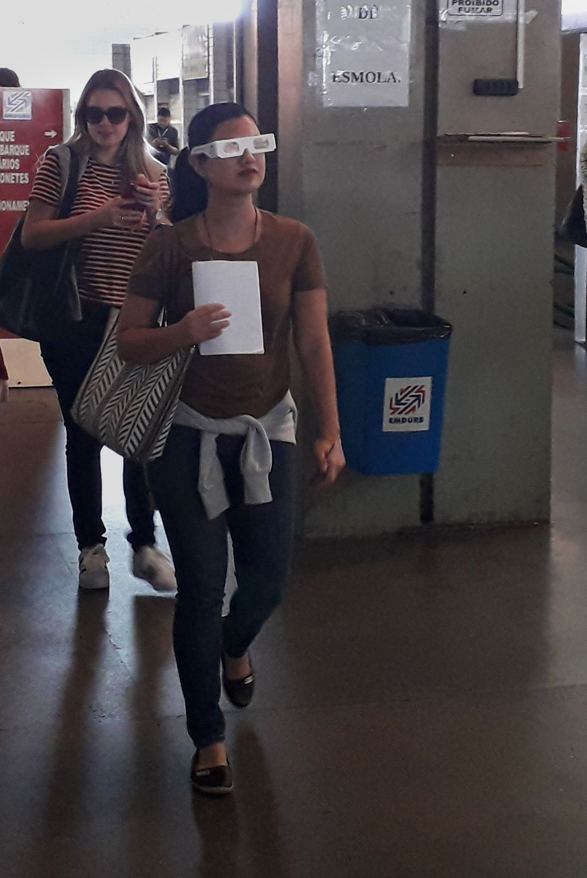Welcome to the 6th edition of the Inclusive Design Toolkit news bulletin from the Cambridge Engineering Design Centre. The bulletin showcases people’s achievements with the tools from this website.
If you would like to receive this bulletin on a regular basis, or contribute to it, then please fill in the feedback form at the bottom of this page.
On this page:
New tool assesses visual accessibility of mobile screenshots
The Clari-Fi tool from the Cambridge Engineering Design Centre can now assess the visual clarity (i.e. perceptibility) of text and icons that appear within mobile phone screenshot.
Clari-Fi assessments are performed by examining these features at an enlarged size, and Gaussian blurring is used to simulate the challenges of viewing these features at the actual size that they would appear on a mobile device, as shown opposite.
A free online demo of this functionality is now available. A worked example also describes how the severity of the Gaussian blurring is calibrated to population data.
The full version of the tool runs in PowerPoint, and is now available to download. A single user licence for the PowerPoint version costs £250 + VAT.
If you are interested in the use of Gaussian blurring to develop better accessibility guidelines for text and icons that appear within mobile phone interfaces, please fill in the feedback form at the bottom of this page.
The Clari-Fi tool can now assess the visual clarity (i.e. perceptibility) of text and icons that appear within mobile phone screenshots.
Photo © Cambridge Engineering Design Centre
Cambridge Simulation Glasses improve empathy in architects
Kim Hutton investigated whether carrying out activities of daily living using Cambridge Simulation Glasses improved empathy levels in architects.
Architects conducted a series of visual and dexterity-based tasks. The study used the Comprehensive State Empathy Scale to measure their empathy levels, before and after the intervention.
This empathic modelling intervention demonstrably improved the participating design professionals’ empathy levels, as shown opposite.
Comments from the group included:
“
this experience changed my subconscious design assumptions and design thinking... introducing humility in design and understanding the needs of our users. ”
“
I think it could have the most overwhelming positive impact on the built environment. ”
All participants reported how useful they found the Cambridge Simulation glasses to be, because they offered valuable insights into end-users’ needs.
More information on this project can be found on the website of Loughborough University, where Kim Hutton is a postgraduate student of Human Factors, and the research page of the Human Connections website.
New personas address digital exclusion
The Cambridge Engineering Design Centre has produced a new set of personas focused on digital exclusion. These personas are intended to encourage designers and other stakeholders to consider the range of people in their target user population. They highlight the range of factors affecting digital exclusion, including technology competence, prior technology experience, motivation and attitudes towards technology.
The personas have been created based on statistical analysis of survey data from across the population. As a result, each persona represents a quantified segment of the population. They can be used to determine who and how many are likely to be excluded from using a digital product or service, and how an interface could be improved to decrease this exclusion.
An initial version of the personas was used by KAD (Keolis Amey Docklands), a public transport company, to help staff think about the user perspective. Feedback indicates that they helped staff to identify issues that users might experience with the service and that they increased levels of empathy and insight.
A PDF version of the digital personas is also available to download.
Bringing inclusive education to Lebanon
Dr. Ken Reimer was invited to Lebanon to deliver a series of lectures on the topic of inclusive education. Teachers and students were introduced to the concept of empathic engineering and design. Students worked with their teachers to design more inclusive ways to add salt and pepper to food.
Dr Reimer introduced the Designing Our Tomorrow Inclusive Salt and Pepper scheme of work, which applies tools from the Inclusive Design Toolkit in an educational context. The initiative aimed to empower young people to become agents of change, by equipping them with the thinking tools to design inclusive solutions to real world problems.
“
It was so rewarding for me to see how young people from all over the world want to make life better for their loved ones. ”
New European standard helps to extend the range of users
Each individual user has their own profile of needs, characteristics, capabilities, and preferences. These factors should be taken into account when developing mainstream products and services. In order to address this, there is a new European Standard, "EN 17161:2019 Design for all, Accessibility following a Design for All approach in products, goods and services - Extending the range of users".
This standard aims to help organisations employ a consistent approach to addressing and managing accessibility. It is intended to be applicable to all relevant parts of all organisations. The standard helps to identify the potential user base with the most diverse needs, and equips them to directly or indirectly involve those users in the processes and procedures,
Organisations can benefit greatly through the continuous improvement of accessibility, to optimise how their products and services can be "accessed, understood and used" by all people.
“
it was a privilege to participate in standardising an approach that advances accessibility and usability for all, to better inform our decisions on the world we design ”
Obtain your copy of "EN 17161:2019 Design for All..." through your national standards body. For more details see the Centre for Excellence in Universal Design website.
Teaching inclusive design in Brazil
As part of a visiting lecture partnership with the São Paulo State University, Dr Emilene Zitkus ran a one-week postgraduate module on ‘Inclusive User Experience (UX) Design’.
The students learnt about a range of user needs including those related to ageing and disabilities. To help the students understand more about the effects of impairments, they were asked to critically evaluate a public transport journey, with the option of wearing the Cambridge Simulation Glasses.
The simulation glasses helped the students to identify several issues: recognising people, finding information, feeling vulnerable or embarrassed, and relying on the help of strangers. Subsequently, the students produced recommendations to improve the user experience.
“
The experience helped me to increase my empathy, and encouraged me to think how design can help address the challenges. ”
“
The Cambridge Simulation Toolkit can have a great impact on students’ experiences and increase understanding of the need for inclusive design. ”
More details can be found in the November 2020 issue of the Design For All newsletter.
Feedback
We would welcome your feedback on this page:
Privacy policy. If your feedback comments warrant follow-up communication, we will send you an email using the details you have provided. Feedback comments are anonymized and then stored on our file server. If you select the option to receive or contribute to the news bulletin, we will store your name and email address on our file server for the purposes of managing your subscription. You can unsubscribe and have your details deleted at any time, by using our Unsubscribe form. If you select the option to receive an activation code, we will store your name and email address on our fileserver indefinitely. This information will only be used to contact you for the specific purpose that you have indicated; it will not be shared. We use this personal information with your consent, which you can withdraw at any time.
Read more about how we use your personal data. Any e-mails that are sent or received are stored on our mail server for up to 24 months.


